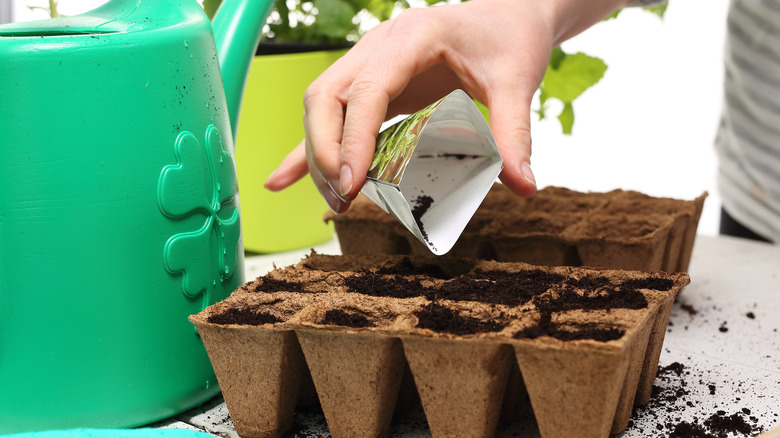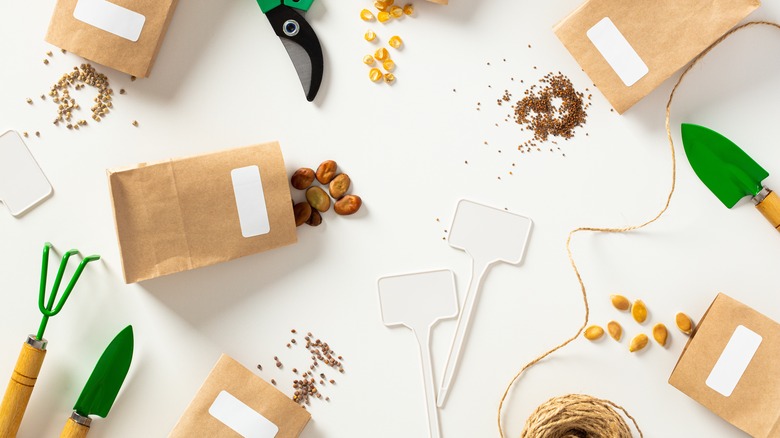Plant Flower Seeds Faster With This Genius Pencil Eraser Hack
Have you just discovered a genius pencil eraser hack that is said to make planting flower seeds faster? A simple trick that was once a common practice has found new life among new gardeners to help sow flower seeds faster, to make planting young transplants easier, and to create planting holes for cuttings after propagating new plants. A pencil is the perfect size for creating planting holes, and having one in your gardening tool arsenal means that you'll reach for it again and again when you're planting seeds. It's especially useful when you've misplaced your dibber — a tool that's been primarily designed for this purpose.
So, what is this pencil eraser hack that makes sowing flower seeds faster? The idea is to insert the pencil into the potting soil, eraser side down, until you can no longer see the metal part. Then, pull it out and drop the seed into the hole. While this works well with larger seeds, many flower seeds are quite small and the hole made using this technique might be too deep for effective germination. Before you use this method, you'll need to first work out how deep you should be planting your seeds. And, while we're on the subject of seed sowing, you also might like to know how to create your own seed starter pots.
Using a pencil eraser to plant seeds
The first thing you want to do is read the instructions on the seed packet which should tell you exactly how deep the seeds need to be planted. As a general rule, seeds should be planted around two to three times as deep as their width. If you measure the end of a pencil from the eraser tip to the end of the metal part, you'll find that it's around ½ an inch or slightly longer. So this means that seeds that have a width of around ¼ of an inch or slightly less can be safely planted using this method because the planting hole made by the pencil will be perfect. But, what about if you have seeds that are larger or really tiny?
For large seeds, you can easily just measure the end of the pencil and place a mark to indicate how deep the planting hole should be, then insert the pencil up to this mark before pulling it out and dropping the seed into the hole. But for really small seeds, you don't want to use this method at all. Tiny seeds should just be scattered over the surface of the soil and then very lightly covered with a fine dusting of more soil or vermiculite. You might even want to mix small seeds with sand before sowing to make it easier.

